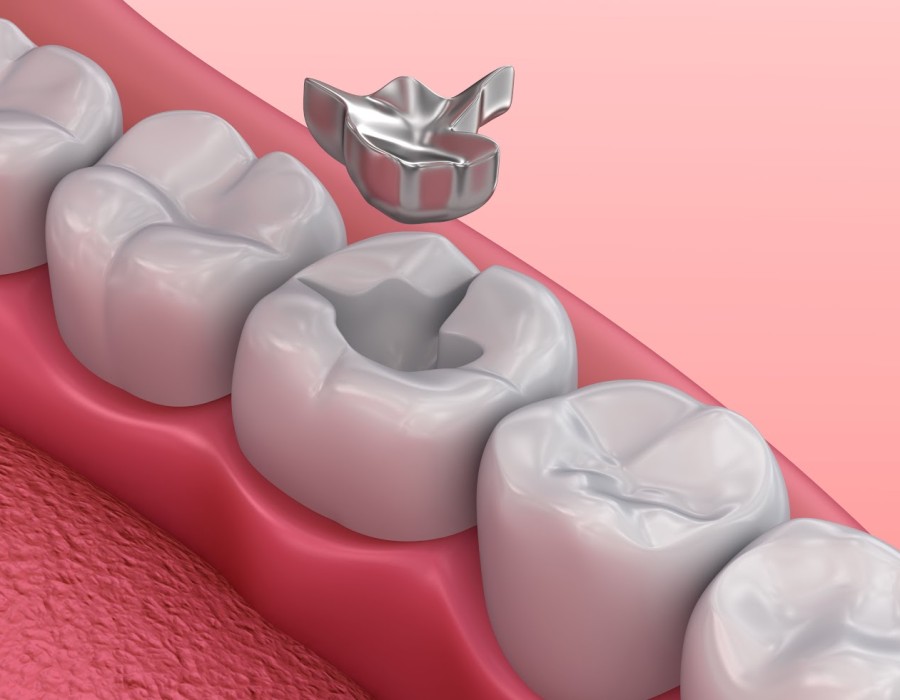Visiting a trusted dentist in Chembur East is essential when you need a filling to restore a damaged tooth and prevent further decay. Dental fillings are among the most common treatments for cavities and minor tooth damage, providing a solution that strengthens and preserves your teeth. With a range of filling materials available, it's important to understand the options and which type of filling may best suit your needs. Let's explore the types of dental fillings, their materials, benefits, and the unique qualities of each one.
Amalgam Fillings
Amalgam fillings, often referred to as silver fillings, have been a staple in dentistry for over a century. Made from a blend of metals, including silver, mercury, copper, and tin, amalgam fillings are known for their durability. They’re especially popular for teeth that handle heavy chewing pressure, like molars.
Advantages: Amalgam fillings are highly durable and long-lasting, often enduring 10-15 years or more. They’re also one of the most affordable filling options.
Disadvantages: Due to their silver color, amalgam fillings are usually avoided in visible areas. Some people also prefer to avoid amalgam due to the mercury content, although it has been proven safe for most patients.
Composite Fillings
Composite fillings, also known as tooth-colored or white fillings, are made from a blend of resin and glass particles. These are a great choice for those seeking a filling that blends naturally with their teeth.
Advantages: Composite fillings are popular due to their aesthetic appeal, seamlessly matching the color of natural teeth. They also bond well to tooth surfaces, giving additional structural support.
Disadvantages: Composite fillings generally have a shorter lifespan compared to amalgam and may need replacement within 5-10 years. They also tend to be slightly more expensive, depending on the filling's location and size.
Ceramic Fillings
Ceramic fillings, often crafted from porcelain, are another attractive and durable option. These are custom-made in a dental lab to fit the exact shape of your cavity and bonded to the tooth.
Advantages: Ceramic fillings resist staining, making them a good choice for individuals who frequently consume staining foods or beverages like coffee and tea. They’re also durable and provide a natural look that blends well with other teeth.
Disadvantages: Ceramic fillings are typically more expensive than composite or amalgam options. They may also require more tooth structure to be removed to ensure a proper fit.
Glass Ionomer Fillings
Glass ionomer fillings are made from a combination of acrylic and a specific type of glass. Often used in children’s teeth or areas that don’t experience much pressure (such as around the gum line), these fillings serve as a good preventive solution.
Advantages: One significant benefit of glass ionomer fillings is their ability to release fluoride, which can strengthen the surrounding tooth and help protect it from further decay. These fillings are also affordable and have a more natural look than amalgam.
Disadvantages: Glass ionomer fillings are less durable than other types and may wear down faster, often requiring replacement sooner.
Gold Fillings
Gold fillings are crafted from a gold alloy, making them one of the most durable filling options available. They are usually custom-made in a lab before being bonded to the tooth.
Advantages: Gold fillings are extremely durable and can last for decades. They don’t corrode and are gentle on surrounding teeth, making them a long-lasting solution.
Disadvantages: Gold fillings are usually the most costly type of filling, both in material and due to the lab work involved. They are also very noticeable, so they may not be ideal for individuals wanting a natural appearance.
Choosing the Right Type of Filling
The ideal filling material depends on several factors, including:
- Location of the Cavity: For visible areas, many people prefer composite or ceramic fillings for their natural look. For molars or back teeth, where strength is important, amalgam or gold fillings are good choices.
- Budget: Amalgam fillings tend to be the most cost-effective, whereas ceramic and gold fillings are more expensive.
- Longevity: If you need a long-lasting solution, gold or ceramic fillings are highly durable options.
- Aesthetic Preferences: For a natural look, composite, ceramic, and glass ionomer fillings blend well with your teeth.
Each filling type offers unique benefits, allowing you to choose the material that best suits your needs, aesthetic goals, and budget. Your dentist in Chembur East can guide you through these options and help select the best filling for your oral health and lifestyle. Remember, regular dental check-ups are crucial for catching decay early, which can prevent the need for fillings and help you maintain a healthy smile.





Comments